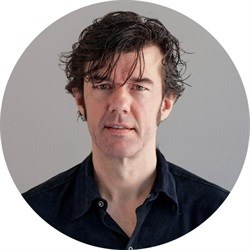
Top stories




The New-York based Austrian tipped Amsterdam, London and Zurich as the hottest places for young designers right now, but in an interview in Rome he said a creative shift has given the Italian capital the opportunity to steal the show.
"Worldwide, beauty is really coming back into design, no other city in the world has so much beauty. Designers who successfully translate Italy's Baroque or Renaissance for the 21st century will have found a pot of gold," he said.
Born in 1962, Sagmeister, inspired by the punk aesthetic, forged his name designing graphics and branding for clients including HBO, Time Warner and the Guggenheim Museum, picking up a Grammy in 2005 for the design of a box set of works by 1980s indie giants Talking Heads.
The designer takes a year-long sabbatical every seven years -- the last one in Indonesia, the next a closely-guarded secret -- and for the past few years has staged talks and exhibitions on his philosophy, dubbed "the happy show".
Tall and angular with a raucous laugh, Sagmeister -- who has documented his struggles with alcohol, drugs, weight gain and depression -- has an infectious playfulness about him.
"I very much embrace humour. By definition every punchline has a surprise in it, and I think a surprise is super important when you are dealing with clients," he said ahead of a show in Rome called "Road to Creativity".
Inspired by a breakfast chat this week with Helmut Leder, a German expert in psychology of the arts, he describes his thrill at discovering surprises "can open you up for beauty, scientifically".
"When you look surprised your eyes are wider... so from a physical point of view you see more. If you first deliver a surprise and then follow up with something beautiful you will engage the viewer more," he said.
Sagmeister was also in the Italian capital to judge a contest at Rome's Rufa University of Fine Arts, in which students had to design works under the theme, "Things I have learned in my life so far".
The idea came from his "desire to use what I've learned as a language, the graphic design language, in something that's much more personal, more direct."
"I come from Austria, where modernism reigns large. I fairly early on rebelled against that. I felt design should be much more human-centric, more personal. Things should look and feel like they come from a human being," he said.
The winner of the Rufa contest will travel to New York for a working lunch with Sagmeister, but young Italian hopefuls should beware that for all his faith in the renaissance of beauty, would-be stars face a challenging climate in Italy.
"The culture can become a burden... and there's not a strong contemporary scene here now, and it's difficult to do it by yourself," he warns.
Moreover, there has been a sharp decline in Italian quality since the 1970s.
"When I began to be interested in design, Italy was basically the leader in Europe in almost every direction; in architecture, product design, graphics, music, it was very high-end in literature and fantastic in film," he said.
"But in almost all of those fronts it's not the leader anymore. What happened?"
Did he have a tip for those determined to break the mould anyway? "Create something that either helps or delights someone. Otherwise you might as well stay in bed".

For more than two decades, I-Net Bridge has been one of South Africa’s preferred electronic providers of innovative solutions, data of the highest calibre, reliable platforms and excellent supporting systems. Our products include workstations, web applications and data feeds packaged with in-depth news and powerful analytical tools empowering clients to make meaningful decisions.
We pride ourselves on our wide variety of in-house skills, encompassing multiple platforms and applications. These skills enable us to not only function as a first class facility, but also design, implement and support all our client needs at a level that confirms I-Net Bridge a leader in its field.
Go to: http://www.inet.co.za